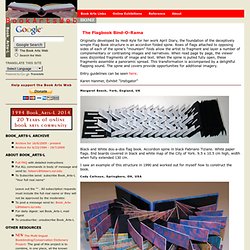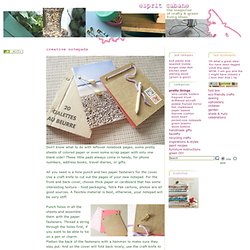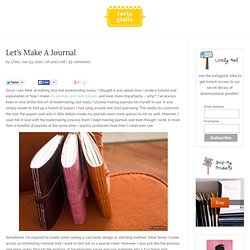

Book covers. Seed Paper Tutorial. I first heard of seed paper–or hand made paper that has real flower seeds embedded in the pulp itself and is actually plantable–about a year ago while browsing through a stationary catalog.

It was the coolest idea I’d ever seen–and so incredibly spring-y! Well, who knew that you could make this funky stuff all by yourself? And dang we had a good time! These would be just perfect to include with a birthday or Christmas card–don’t you think? First Step: Making the Screen Frame Here’s what you’ll need for the screen frame: 6-12 wide craft sticks–think tongue depressors Craft glue 1 or 2 pieces of mesh or screen about 6″x6″ electrical tape Glue four sticks together–like this. Lay the screen over the sticks and glue in place. Now glue two more sticks–one on the top and one on the bottom.
I rested a glass bowl over the frames to hold everything in place until the glue dried. Your frame should look pretty much like this. Second Step: Making the paper pulp Here’s what you’ll need to make the pulp: water. Flag Book Binding Bind-O-Rama. Originally developed by Hedi Kyle for her work April Diary, the foundation of the deceptively simple Flag Book structure is an accordion folded spine.

Rows of flags attached to opposing sides of each of the spine’s “mountain” folds allow the artist to fragment and layer a number of complementary or contrasting images and narratives. When read page by page, the viewer sees disjointed fragments of image and text. When the spine is pulled fully open, these fragments assemble a panoramic spread. This transformation is accompanied by a delightful flapping sound. The spine and covers provide opportunities for additional imagery. Entry guidelines can be seen here. Karen Hanmer, Exhibit “Instigator” Margaret Beech, York, England, UK Black and White dos-a-dos flag book. I saw an example of this structure in 1990 and worked out for myself how to construct the book. Cody Calhoun, Springboro, OH, USA Things I Know for Sure Bobbie Christiansen, Levittown, PA, USA Marcia Ciro, Watertown, MA, USA Self-taught.
Button book. Pocket-Size Notepads. Don't know what to do with leftover notebook pages, some pretty sheets of colored paper or even some scrap paper with only one blank side?

These little pads always come in handy, for phone numbers, address books, travel diaries, or gifts. All you need is a hole punch and two paper fasteners for the cover. Use a craft knife to cut out the pages of your new notepad. For the front and back cover, choose thick paper or cardboard that has some interesting texture - food packaging, Tetra Pak cartons, photos are all good sources. A flexible material is best, otherwise, your notepad will be very stiff. Punch holes in all the sheets and assemble them with the paper fasteners. Tortagialla.com - the creative journal of Artist Linda Tieu. Since I can think of nothing else but bookbinding today, I thought it was about time I wrote a tutorial and explanation of how I make my journals and sketchbooks and even more importantly – why!?

I’ve always been in awe of the fine art of bookmaking, but really I started making journals for myself to use. It was simply easier to fold up a bunch of papers I had lying around and start journaling. The ability to customize the size, the papers and add in little details made my journals even more special to me as well. However, I soon fell in love with the bookmaking process itself. I kept making journals and even though I work in more than a handful of journals at the same time, I quickly produced more than I could ever use. Sometimes I’m inspired to create when seeing a cool book design or stitching method. I most often use leather for my journal covers and that is because I acquire remainder stock from local production companies here in Tuscany, Italy. That’s it! Related Posts: